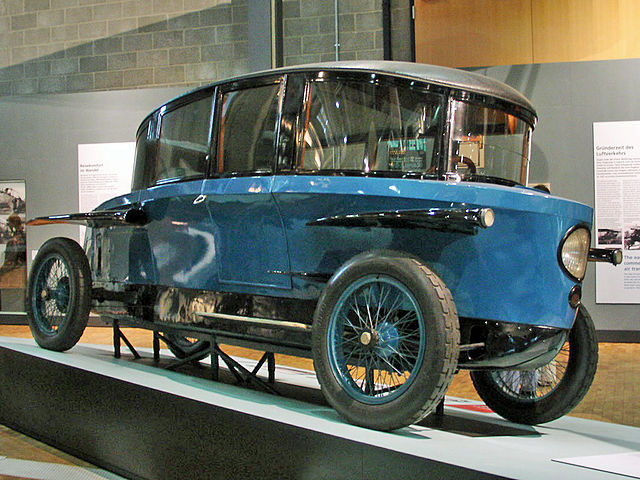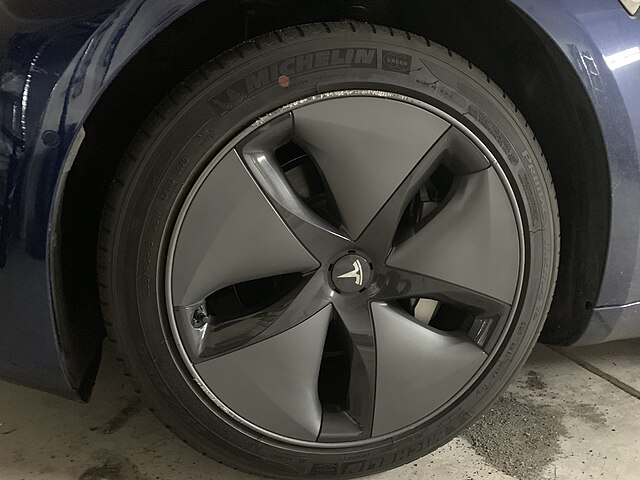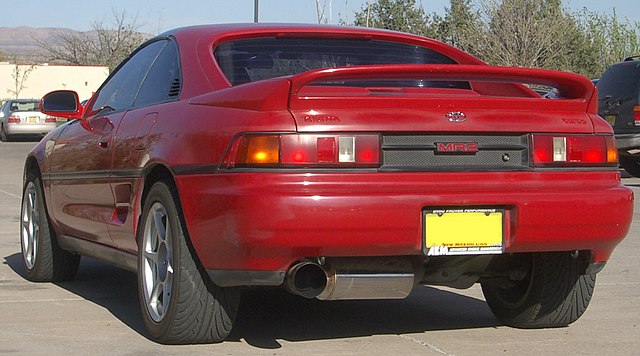Automotive aerodynamics is the study of the aerodynamics of road vehicles. Its main goals are reducing drag and wind noise, minimizing noise emission, and preventing undesired lift forces and other causes of aerodynamic instability at high speeds. Air is also considered a fluid in this case. For some classes of racing vehicles, it may also be important to produce downforce to improve traction and thus cornering abilities.
Edmund Rumpler's 1921 Tropfenwagen was the first series-produced aerodynamically designed automobile, before the Chrysler Airflow and the Tatra 77.
Streaklines over a model car
Alloy wheels with covers on a Tesla Model 3
2017 Land Rover Discovery with front air curtains
A spoiler is an automotive aerodynamic device whose intended design function is to 'spoil' unfavorable air movement across the body of a vehicle in motion, usually manifested as lift, turbulence, or drag. Spoilers on the front of a vehicle are often called air dams. Spoilers are often fitted to race and high-performance sports cars, although they have become common on passenger vehicles as well. Spoilers are added to cars primarily for styling purposes and either have little aerodynamic benefit or even worsen the aerodynamics.
The Plymouth Superbird is famous for its high factory rear wing.
1987 Audi Sport Quattro S1 with special racing wings and the Pikes Peak International Hill Climb livery, in the Goodwood Festival of Speed
Retractable spoiler on a Chrysler Crossfire
Toyota MR2 with a factory-installed rear spoiler








